Planning to travel for 6 weeks in India gives you a lot of options. But there can be an overwhelming number of choices to make. Where should you go? How long should you stay in each place?
Having spent over four years traveling around India, I’ve planned many itineraries and visited famous destinations and offbeat gems.
If you have 6 weeks in India, an ideal itinerary could look like this:
- Delhi: The Capital’s Historic Allure
- Rajasthan (Jaipur, Udaipur, Jodhpur): Royalty Redefined
- Uttar Pradesh (Agra, Varanasi): Love Monuments and Spiritual Awakenings
- Himachal Pradesh and Uttarakhand: Himalayan Retreats
- Punjab (Amritsar): Golden Hues and Culinary Delights
- Maharashtra (Mumbai): The Cosmopolitan Pulse
- West Bengal (Kolkata, Darjeeling): Colonial Past and Tea Estates
- Karnataka (Bangalore, Hampi, Mysore): Tech Hubs and Ancient Kingdoms
- Kerala: Backwaters and Green Euphoria
- Tamil Nadu (Chennai, Pondicherry, Mahabalipuram): Temples and French Riviera of the East
But even this full itinerary would miss out on beautiful sights like Goa’s beaches, Odisha’s Templates, the more natural North-East States, and the heart of India’s temples.
Embarking on this 6 weeks in India journey will offer a rich mosaic of experiences, but you can’t see it all. Read the full article as I cover the destinations in each region of India from North, South, East, and West.
I’ll also share ideal itineraries for budget, mid-range, and luxury travelers. Plus, I’ll answer FAQs about how to travel for 6 weeks in India.
Let’s set forth on this epic adventure!
Planning a trip to India at some point? Check out my free ebook to help you save time and money, and avoid headaches. After +4 years in India, I’ve made plenty of mistakes, and this guide shares what I’ve learned so you can have a smoother trip.
North India: Must-See Destinations & Little-Known Attractions
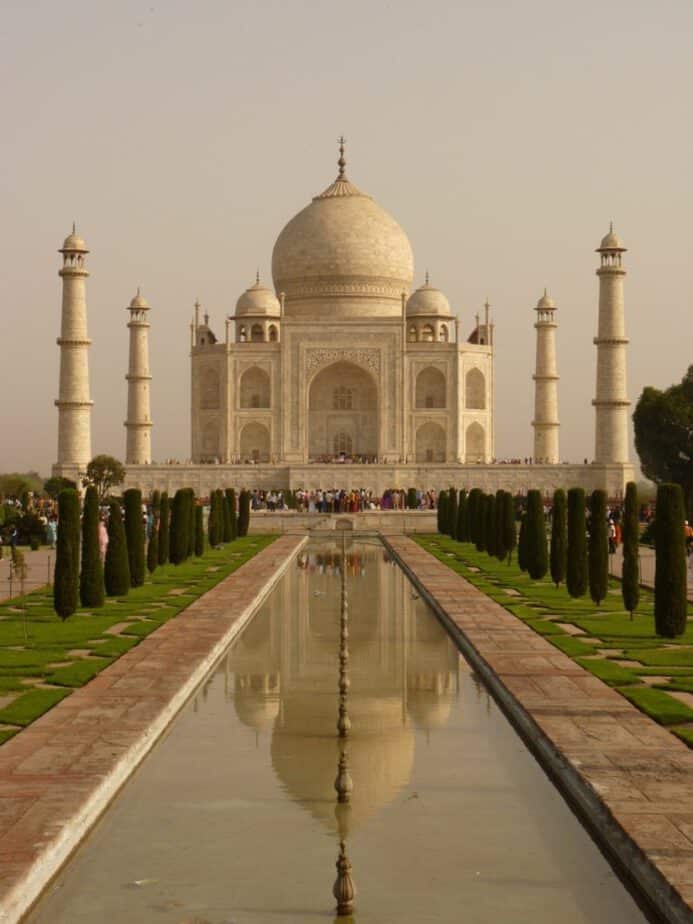
When planning your 6 weeks in India, you must include destinations in North India.
India’s northern regions are an eclectic mix of snow-capped mountains, sprawling plains, and ancient cities teeming with history and culture.
Here’s your guide to navigating this beautiful territory with these destinations:
- Delhi
- Agra
- Jaipur
- Varanasi
- Rishikesh & Hardiwar
- Shimla
Delhi: The Heart and Soul of India
Days: 3-4
Hotel Recommendations:
– Budget: Smyle Inn, Paharganj
– Mid-range: Bloomrooms @ New Delhi Railway Station
– Luxury: The Imperial, Janpath
Must-See Things To Do:
– Red Fort: A UNESCO World Heritage site and a prime example of Mughal architecture.
– India Gate: A 42-meter high arch and war memorial.
– Humayun’s Tomb: The precursor to the Taj Mahal.
Little-known Attractions:
– Agrasen Ki Baoli: An ancient stepwell in the city’s heart.
– Mehrauli Archaeological Park: A sprawling park dotted with historical structures.
Estimated Cost: $20-40 per day (excluding luxury accommodations).
Pro Tip: While in Delhi, dine at Karim’s near Jama Masjid for an authentic Mughal culinary experience. And always carry a bottle of water; Delhi’s heat can be deceptive.
I remember taking a street food tour through Chandni Chowk, Delhi’s bustling market, absorbing the myriad sounds and colors. The aroma of parathas wafting from a narrow alleyway led me to ‘Paranthe Wali Gali’, a lane dedicated to various types of stuffed Indian bread. A must-visit for any food lover.
Read more: Best Time To Visit India
Agra – The City of the Taj
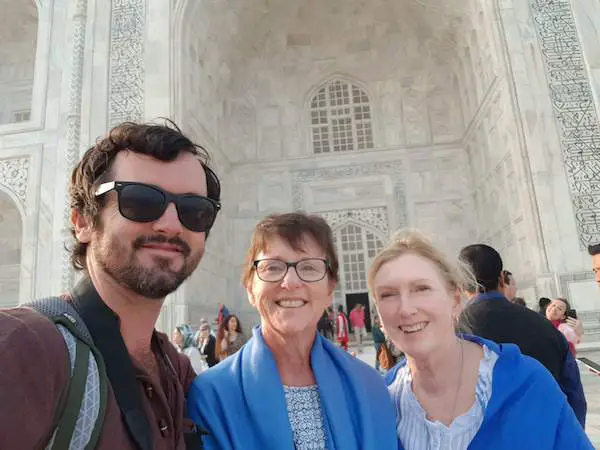
Days: 1-2
Hotel Recommendations:
– Budget: Sai Palace
– Mid-range: Seven Hills Tower
– Luxury: The Oberoi Amarvilas
Must-See:
– Taj Mahal: An iconic symbol of love and a UNESCO World Heritage site.
– Agra Fort: A majestic fort from the Mughal era.
– Fatehpur Sikri: The abandoned Mughal city.
Little-known Attractions:
– Akbar’s Mausoleum: The tomb of the great Mughal Emperor, Akbar.
– Mehtab Bagh: A moonlit garden offering a rear view of the Taj Mahal.
Estimated Cost: $25-50 per day (excluding luxury accommodations).
Pro Tip: Visit the Taj Mahal att sunrise for a less crowded and more serene experience.
The Taj was one of my favorite places, and in the morning, in the pink light, I got some great photos. I thought it was hilarious how all the tourists were taking selfies, and meeting people from all over the world was a blast.
Read more: Cool Places To Visit in Agra At Night
Jaipur – The Pink City
Days: 2-3
Hotel Recommendations:
– Budget: Hostel Lavie; a budget-friendly option with a youthful vibe.
– Mid-range: Alsisar Haveli; a peek into the royal past.
– Luxury: Rambagh Palace; live like the Maharajas.
Must-See:
– Amer Fort: Perched on a hill, it’s a testament to Rajput grandeur.
– City Palace: A fusion of Mughal and Rajput architectural styles.
– Hawa Mahal: Known for its unique five-story exterior.
Little-known Attractions:
– Galtaji Temple: An ancient Hindu pilgrimage site nestled between two cliffs.
– Sisodia Rani Garden: A peaceful garden built by Maharaja Sawai Jai Singh II.
Estimated Cost: $25-45 per day (excluding luxury accommodations).
Pro Tip: Explore the local markets in the evening. From handmade jewelry to colorful textiles, there’s much to bring back home.
I stayed in the nice homestay with some maharajas. The woman was the sweetest and sat down for an interview for my Youtube channel. She told me all about her family’s history and her photograph collection was impressive.
Read more: Best Places in India for Photography
Varanasi – The Spiritual Capital of India
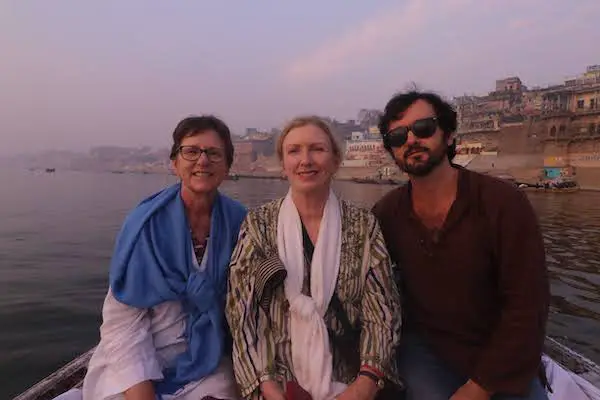
Days: 2-3
Hotel Recommendations:
– Budget: Banaras Paying Guest House
– Mid-range: Rivatas By Ideal
– Luxury: BrijRama Palace
Must-See:
– Kashi Vishwanath Temple: A major pilgrimage point for Hindus.
– Dashashwamedh Ghat: Experience the mesmerizing Ganga Aarti in the evening.
– Manikarnika Ghat: Understand the spiritual philosophy behind the circle of life and death.
Little-known Attractions:
– Alamgir Mosque: A blend of Hindu and Mughal styles of architecture.
– Sankat Mochan Hanuman Temple: Famous for its musical renditions of the Ramayana.
Estimated Cost: $20-40 per day (excluding luxury accommodations).
Pro Tip: Hire a boat in the early morning to witness the sunrise on the Ganges and the life of the ghats – a spiritual journey like no other.
My morning boat ride with my mom and aunt in Varanasi remains one of the most ethereal experiences. Watching the city wake up, with chants and bells resonating, was otherworldly.
Read more: Do’s and Don’ts in Varanasi
Rishikesh and Haridwar – The Twin Spiritual Cities
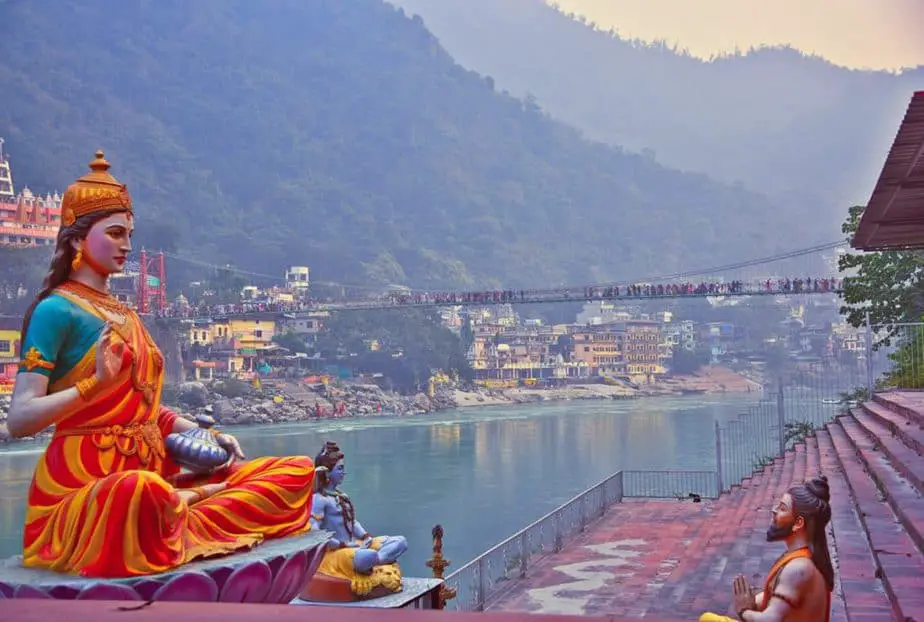
Days: 3
Hotel Recommendations:
– Budget: Live Free Hostel
– Mid-range: Holy River Hotel
– Luxury: Aalia on the Ganges
Must-See:
– Ram Jhula & Lakshman Jhula: Iconic suspension bridges across the Ganges.
– The Ganga Aarti at Triveni Ghat: A spiritual ceremony dedicated to the river.
– Mansa Devi Temple, Haridwar: A temple atop the Bilwa Parvat.
Little-known Attractions:
– Beatles Ashram: Where the famous Beatles band spent time and penned several songs.
– Neelkanth Mahadev Temple: Located amidst forests, a serene spot away from the city hustle.
Estimated Cost: $20-40 per day (excluding luxury accommodations).
Pro Tip: Rishikesh is also known as the ‘Yoga Capital of the World’. Try to attend a class or short course to dive into the serenity it offers.
My girlfriend spent a lot of time in Rishikesh, and it’s the place to be if you want to go to yoga retreats. It’s located right on the Ganges River and is a short trip from Delhi. This could be a good stop early in your trip.
Read more: Off-The-Beaten Bath Places in India to Chill & Relax
Shimla – Queen of Hills

Days: 2-3
Hotel Recommendations:
– Budget: Hotel White; a quaint hotel with a colonial touch.
– Mid-range: Clarkes Hotel; a heritage hotel from the colonial era.
– Luxury: Wildflower Hall; an oasis of luxury in the Himalayas.
Must-See:
– The Ridge: A large open space in the heart of the town.
– Kalka-Shimla Railway: A UNESCO World Heritage site, offering panoramic views of the mountain terrain.
Little-known Attractions:
– Chadwick Waterfalls: Located just a few kilometers from Shimla, it’s a serene spot away from the crowds.
– Johnnie’s Wax Museum: A less-known attraction with some intriguing exhibits.
Estimated Cost: $30-50 per day (excluding luxury accommodations).
Pro Tip: If you’re into hiking, take the trek to Jakhu Temple. The climb is steep but the panoramic view of the Himalayas is worth the effort.
A friend of mine was fortunate to witness a local festival on The Ridge. The vibrant dances, echoing folk music, and authentic Himachali cuisine made it an unforgettable experience. I had to cancel my trip here because the local highways had gotten washed out during the monsoon.
Again, North India offers a plethora of experiences. One can easily spend months exploring, but this guide aims to provide a glimpse into its rich tapestry for your 6-week adventure.
South India: Discover the Traditional Beauty
South India, with its unique blend of modern cities, ancient temples, pristine beaches, and serene landscapes, offers a rich tapestry of experiences. Let’s dive into some of the must-visit destinations in this region.
Kochi and the Backwaters – The Heart of Kerala

Days: 3-4
Hotel Recommendations:
– Budget: Fort House Hotel
– Mid-range: Ginger House Museum Hotel
– Luxury: Grand Hyatt Kochi Bolgatty
Must-See:
– Fort Kochi: A historic region with Portuguese, Dutch, and British influences.
– Chinese Fishing Nets: A unique method of fishing introduced by Chinese traders.
– Kerala Backwaters: Navigate the serene waterways on a traditional houseboat.
Little-known Attractions:
– Kerala Folklore Theatre & Museum: Discover the rich arts and cultural heritage.
– Santa Cruz Basilica: An architectural marvel and one of the eight basilicas in India.
Estimated Cost: $30-60 per day (excluding luxury accommodations).
Pro Tip: Opt for a local homestay while exploring the backwaters to get an authentic taste of Kerala’s hospitality and cuisine.
On a houseboat journey, my mom and aunt, and I listened to the sound of water and chirping birds, which made the entire experience feel like a beautiful dream.
Read more: Best Time To Visit South India
Bangalore – The Silicon Valley of India
Days: 3-4
Hotel Recommendations:
– Budget: Treebo Trend Stylotel By Jagdish
– Mid-range: The Chancery Pavilion
– Luxury: The Leela Palace Bengaluru
Must-See:
– Bangalore Palace: A Tudor-style palace with a rich history.
– Lalbagh Botanical Garden: A haven for nature lovers.
– Cubbon Park: The green lung of the city.
Little-known Attractions:
– Tipu Sultan’s Summer Palace: An Indo-Islamic architectural beauty.
– Nandi Hills: A tranquil getaway from the city rush.
Estimated Cost: $40-80 per day (excluding luxury accommodations).
Pro Tip: If you’re a tech enthusiast, visiting a local startup hub or tech park could provide insight into why Bangalore is called the Silicon Valley of India.
I was amazed to find such a harmonious blend of modernity and tradition in Bangalore. Visiting local artisan markets after a tech tour was an unexpected yet delightful contrast. You must try the podi dosas and uttapam.
Read more: Is Bangalore Better Than Chennai?
Karnataka Trips from Bangalore – Hampi and Mysore
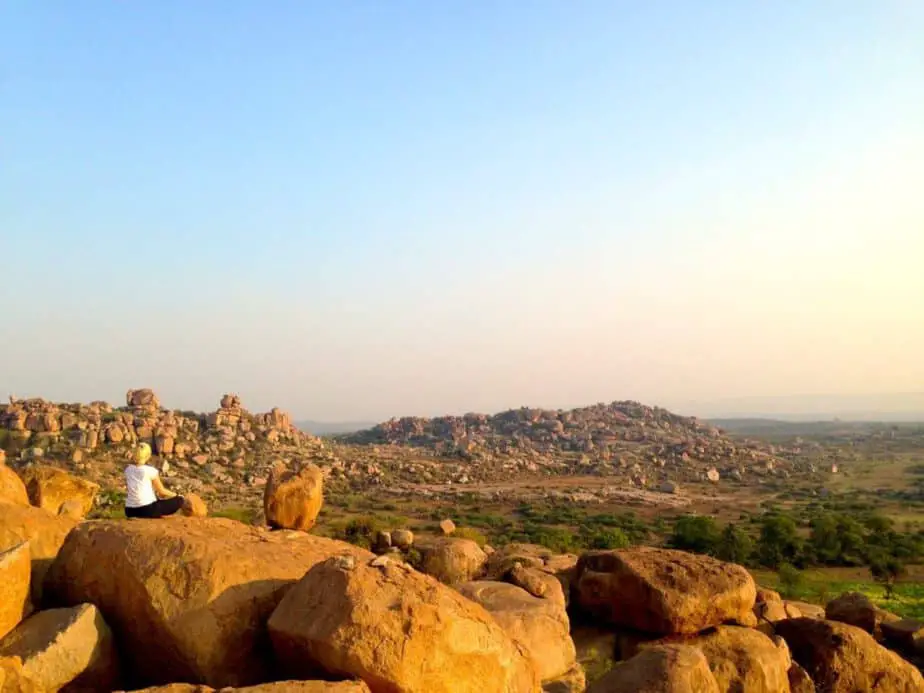
Days: 3-4
– Hampi
– Ruins of the ancient Vijayanagara Empire.
– Virupaksha Temple and Vittala Temple.
– Pro Tip: Rent a bicycle to explore the ruins at your own pace.
– Mysore
– Mysore Palace: A magnificent architectural masterpiece.
– Chamundi Hill: Offering panoramic views of the city.
– Pro Tip: Don’t miss the Mysore Pak, a local sweet delicacy.
Chennai – The Gateway to South India
Days: 2-3
Hotel Recommendations:
– Budget: Red Lollipop Hostel
– Mid-range: Raj Park
– Luxury: Taj Coromandel
Must-See:
– Marina Beach: The world’s second-longest urban beach.
– Kapaleeshwarar Temple: A true testament to Dravidian architecture.
– Government Museum: Delve into the history and culture of the region.
Little-known Attractions:
– Dakshinachitra Museum: Experience the arts and traditions of South India.
– Guindy National Park: A green escape in the heart of the city.
Estimated Cost: $30-70 per day (excluding luxury accommodations).
Pro Tip: Attend a Carnatic music concert or traditional dance performance to fully immerse in the city’s rich cultural offerings.
The bustling streets of Mylapore, with its temples, markets, and eateries, provided a sensory overload, making it one of my favorite spots in Chennai.
Read more: Ideal Time To Visit Chennai
Pondicherry and Tiruvannamalai – French Legacy and Spiritual Pursuits
Days: 3-4
– Pondicherry
– French Quarter: Walk along streets with colonial-era French architecture.
– Aurobindo Ashram: A spiritual community established in 1926.
– Pro Tip: Rent a bicycle to navigate the quaint streets of the French Quarter.
– Tiruvannamalai
– Arunachaleswarar Temple: A significant pilgrimage site.
– Ramana Ashram: The abode of the modern sage, Ramana Maharshi.
– Pro Tip: Witness the Karthigai Deepam, an annual festival, if visiting in November.
South India is more than just these destinations. Each corner of this region promises unique stories, flavors, and visuals. Embrace the journey and the the warmth of its people.
Read more: Is Pondicherry Worth Visiting?
West India: The Vibrant Coastal Charm
As your 6 weeks in India stretches on, you’ll want to head to West India. From the glitz and glamor of Bollywood in Mumbai to the serene beaches of Goa and the rich history of Gujarat’s cities, West India is a kaleidoscope of experiences. Let’s unpack some of its top destinations.
Mumbai – The City That Never Sleeps
Days: 3-4
Hotel Recommendations:
– Budget: Abode Bombay
– Mid-range: The Gordon House Hotel
– Luxury: The Taj Mahal Palace
Must-See:
– Gateway of India: A historic arch-monument built in the 20th century.
– Marine Drive: A picturesque boulevard, also known as the Queen’s Necklace.
– Chhatrapati Shivaji Maharaj Vastu Sangrahalaya (formerly the Prince of Wales Museum): A premier art and history museum.
Little-known Attractions:
– Banganga Tank: An ancient water tank in the middle of the bustling city.
– Global Vipassana Pagoda: A golden pagoda that’s a symbol of peace and harmony.
Estimated Cost: $50-100 per day (excluding luxury accommodations).
Pro Tip: Explore the city’s local street food, especially at Chowpatty Beach. The vada pav and pani puri are must-tries.
My evening walk at Marine Drive, watching the sun set over the Arabian Sea, while savoring kulfi (a traditional ice cream), remains one of my fondest memories of Mumbai.
Read more: How To Travel Mumbai’s Local Trains
Goa – A Slice of Paradise
Days: 4-5
Hotel Recommendations:
– Budget: Jamboree Creek
– Mid-range: Alagoa Resort
– Luxury: Taj Fort Aguada Resort & Spa
Must-See:
– Calangute Beach: Goa’s most popular and largest beach.
– Fort Aguada: A well-preserved 17th-century Portuguese fort.
– Basilica of Bom Jesus: A UNESCO World Heritage site.
Little-known Attractions:
– Galgibag Beach: A secluded beach, also known as the turtle nesting site.
– Spice Plantations: Dive into the aromatic world of Indian spices.
Estimated Cost: $30-70 per day (excluding luxury accommodations).
Pro Tip: Instead of the popular beaches, explore the Southern Goa beaches for a quieter and more relaxed experience.
On one of my trips, I stumbled upon a local Fado (a Portuguese genre of music) performance in a small tavern. The soulful melodies against the backdrop of a Goan night were enchanting.
Read more: What Actually Happens in Goa?
Gujarat – Land of Legends and Lions
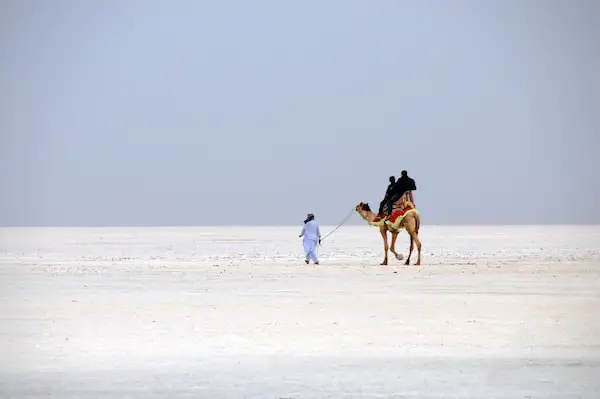
Days: 4-5
– Ahmedabad
– Sabarmati Ashram: Once the residence of Mahatma Gandhi.
– Adalaj Stepwell: A marvel of Indo-Islamic architecture.
– Pro Tip: Experience the local heritage walk which takes you through the heart of the old city.
– Gir National Park
– Home to the Asiatic lion.
– A rich diversity of flora and fauna.
– Pro Tip: Book your safari well in advance, especially during peak seasons.
– Dwarka & Somnath
– Ancient temples representing the rich religious heritage.
– Mesmerizing coastal views.
– Pro Tip: Attend the evening aarti (ceremonial prayer) at the temples for a spiritual experience.
My friend had great things to say about the Rann of Kutch during the Rann Utsav (festival). The vast white desert, under the moonlight, with cultural performances that were nothing short of magical.
West India offers an eclectic mix of the modern and the ancient, the serene and the bustling. It’s a region of contrasts, and each destination holds its unique allure. Whether you’re seeking adventure, spirituality, or relaxation, West India promises to deliver.
East India: Delving into Rich Culture and Stunning Landscapes
East India, a blend of colonial history, diverse cultures, and captivating terrains, promises an unparalleled experience. Let’s journey through some of its mesmerizing destinations.
Kolkata – The Cultural Capital of India
Days: 3-4
Hotel Recommendations:
– Budget: The Bohemian House
– Mid-range: The Park Kolkata
– Luxury: The Oberoi Grand
Must-See:
– Victoria Memorial: An imposing marble structure built in the memory of Queen Victoria.
– Howrah Bridge: An iconic cantilever bridge over the Hooghly River.
– Indian Museum: The largest and oldest museum in India.
Little-known Attractions:
– Kumortuli: A traditional potter’s quarter, famous for crafting clay idols.
– Jorasanko Thakur Bari: The ancestral home of the famous Tagore family.
Estimated Cost: $30-70 per day (excluding luxury accommodations).
Pro Tip: Don’t leave without trying the city’s famed sweets – rasgulla and sandesh.
I took a street food tour that only went to restaurants that were over 100 years old. There were more than 10 spots, and while I was bursting, it was a delicious way to see the city.
Darjeeling – The Queen of Hills
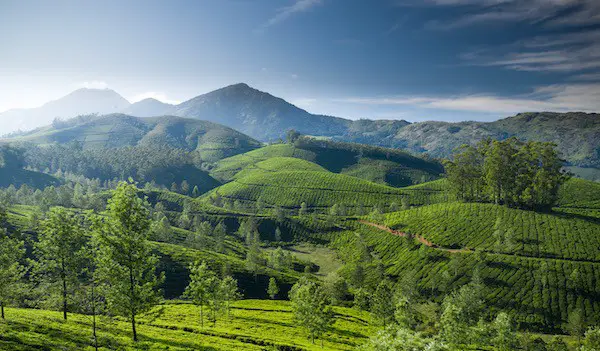
Days: 3
Hotel Recommendations:
– Budget: Revolver
– Mid-range: Central Nirvana Resort
– Luxury: Mayfair Darjeeling
Must-See:
– Tiger Hill: Witness a breathtaking sunrise over the Kanchenjunga range.
– Batasia Loop: A unique spiral railway track offering panoramic views.
– Darjeeling Himalayan Railway: A UNESCO World Heritage site.
Little-known Attractions:
– Happy Valley Tea Estate: Understand the nuances of tea production.
– Peace Pagoda: A symbol of harmony and unity.
Estimated Cost: $40-80 per day (excluding luxury accommodations).
Pro Tip: Consider visiting during the off-peak seasons to avoid the tourist rush and to get better hotel rates.
My friend told me of conversations with the local tea pluckers, learning about their daily lives while sipping some freshly brewed Darjeeling tea, added a layer of depth to her travel experiences.
Odisha – A Mélange of Ancient Temples and Pristine Beaches
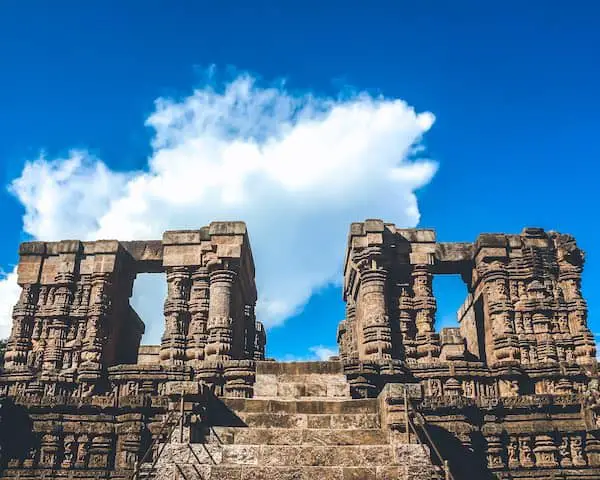
Days: 4-5
Hotel Recommendations in Bhubaneswar:
– Budget: Ginger Bhubaneswar
– Mid-range: Mayfair Lagoon
– Luxury: Trident, Bhubaneswar
Hotel Recommendations in Puri:
– Budget: Zostel Puri
– Mid-range: Toshali Sands
– Luxury: Mayfair Waves
Must-See Attractions:
– Bhubaneswar:
– Lingaraja Temple: An epitome of Kalinga architecture.
– Dhauli: An ancient site with edicts of Emperor Ashoka inscribed on a mass of rock.
– Rajarani Temple: Known as the “love temple” due to its ornate carvings.
– Puri:
– Jagannath Temple: A significant pilgrimage destination and part of the Char Dham Yatra.
– Puri Beach: A golden sand beach known for its sunrise and sunset views.
– Sudarshan Craft Museum: Showcasing the rich handicraft tradition of the region.
– Konark:
– Sun Temple: A UNESCO World Heritage Site renowned for its intricate stone carvings symbolizing the chariot of the Sun God.
Little-known Attractions:
– Bhubaneswar:
– Bindusagar Lake: A tranquil lake surrounded by temples.
– Pathani Samanta Planetarium: A place to learn about the universe and its wonders.
– Puri:
– Raghurajpur Artist Village: Home to the traditional Pattachitra and Talapatrachitra artworks.
– Baliharachandi Beach: A secluded beach away from the touristy crowd.
– Konark:
– Ramachandi Beach: A serene beach offering water sports and beautiful views.
– Chandrabhaga Beach: Known for its scenic beauty and the seven-day long Chandrabhaga Mela.
Estimated Cost: $40-90 per day (excluding luxury accommodations).
Pro Tips:
– While in Bhubaneswar, take a short day trip to the Udayagiri and Khandagiri Caves, ancient Jain rock-cut shelters.
– If you’re a seafood lover, don’t miss out on the coastal delicacies in Puri.
– In Konark, rent a bicycle and explore the town at your own pace. It’s a great way to discover hidden gems.
– Respect local customs, especially when visiting religious sites. For instance, non-Hindus are not allowed inside the Jagannath Temple’s inner sanctum.
My good friend told me of a quiet evening spent at Chandrabhaga Beach. The waves’ melodic rhythm, the sunset’s crimson hues, and the distant sound of temple bells created an ambiance of pure serenity. Odisha sounds like a traveler’s delight with its rich history and natural beauty.
East India offers more than just sightseeing; it’s a deep dive into the region’s history, culture, and traditions. With its tales and traditions, each city and town makes for an immersive travel journey. Embrace the sights, sounds, and tastes as you traverse this enigmatic part of India.
North East India: The Undiscovered Frontier
You could skip North East India if you only have 6 weeks in India. But if you’re looking for offbeat destinations or want to step into the past, you should add it.
North East India, often called the ‘Seven Sisters,’ has lush greenery, diverse tribes, and pristine landscapes. Comprising the states of Assam, Meghalaya, Nagaland, Arunachal Pradesh, Manipur, Mizoram, Tripura, and Sikkim, it offers a unique blend of cultures and breathtaking natural beauty.
Assam – The Tea Capital and Wildlife Haven
Days: 3-4
Hotel Recommendations:
– Budget: Hotel Rajmahal
– Mid-range: Vivanta Guwahati
– Luxury: The Tea Bungalow
Must-See:
– Kaziranga National Park: Home to the one-horned rhinoceros.
– Majuli Island: The world’s largest river island, known for its Neo-Vaishnavism satras (monasteries).
– Assam Tea Gardens: Dive into the world of tea production.
Little-known Attractions:
– Sivasagar: Historical monuments from the Ahom dynasty.
– Hajo: An ancient pilgrimage center for Hindus, Buddhists, and Muslims.
Estimated Cost: $30-80 per day (excluding luxury accommodations).
Pro Tip: Try a traditional Assamese thali for a mix of local flavors.
Meghalaya – The Abode of Clouds

Days: 3
Hotel Recommendations:
– Budget: Cafe Shillong Bed & Breakfast
– Mid-range: Ri Kynjai
– Luxury: Polo Orchid Resort, Cherrapunji
Must-See:
– Living Root Bridges: Nature’s marvels, created by intertwining the aerial roots of rubber trees.
– Mawsynram: Known as the wettest place on Earth.
– Nohkalikai Falls: India’s tallest plunge waterfall.
Little-known Attractions:
– Mawlynnong: Dubbed ‘Asia’s Cleanest Village.’
– Dawki: A town on the border with Bangladesh, known for its clear river.
Estimated Cost: $40-90 per day (excluding luxury accommodations).
Pro Tip: If you’re adventurous, explore the caves in Meghalaya, like the Mawsmai Caves.
Sikkim – The Himalayan Shangri-La
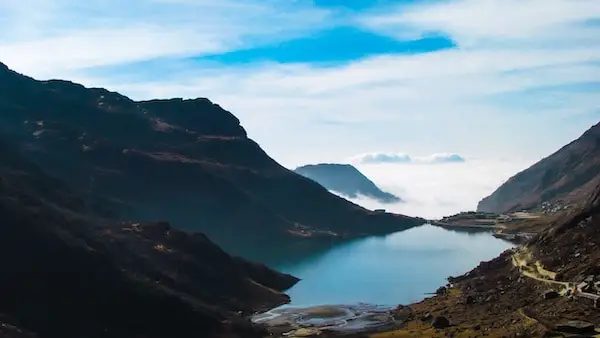
Days: 3-4
Hotel Recommendations:
– Budget: Tashi Tagey Hotel
– Mid-range: Udaan Olive Hotel & Spa, Pelling
– Luxury: Mayfair Spa Resort & Casino, Gangtok
Must-See:
– Rumtek Monastery: A beautiful and significant Tibetan Buddhist monastery.
– Nathu La Pass: One of the highest motorable roads, on the Indo-China border.
– Tsomgo Lake: A glacial lake surrounded by rugged mountains.
Little-known Attractions:
– Pemayangtse Monastery: One of Sikkim’s oldest and most significant monasteries.
– Ravangla: A picturesque town offering panoramic Himalayan views.
Estimated Cost: $50-100 per day (excluding luxury accommodations).
Pro Tip: Sikkim is an organic state, so relish the fresh produce in local dishes.
Nagaland – Land of Festivals
Days: 2-3
Hotel Recommendations:
– Budget: Hotel Vivor
– Mid-range: Dimori Cove
– Luxury: The Heritage Kohima
Must-See:
– Hornbill Festival: A cultural extravaganza showcasing tribal traditions (held in December).
– Kohima War Cemetery: A memorial in honor of soldiers who died during World War II.
Little-known Attractions:
– Longwa Village: A village that straddles the border between India and Myanmar.
– Dzukou Valley: Often referred to as the ‘Valley of Flowers of the East’.
Estimated Cost: $40-80 per day (excluding luxury accommodations).
Pro Tip: When visiting tribal areas, always respect local customs and traditions.
With its unspoiled natural beauty, vibrant cultures, and rich history, North East India offers travelers an unparalleled journey into one of India’s least explored regions. From tasting exotic cuisines to witnessing ancient traditions, it’s a treasure trove of experiences.
Central India: The Heartland of Heritage and Wilderness
Central India is India’s cultural and geographical heart, boasting historical monuments, dense forests, and age-old traditions. This region primarily encompasses the states of Madhya Pradesh and Chhattisgarh, offering travelers a rich tapestry of experiences.
Madhya Pradesh – The Land of Temples and Tigers
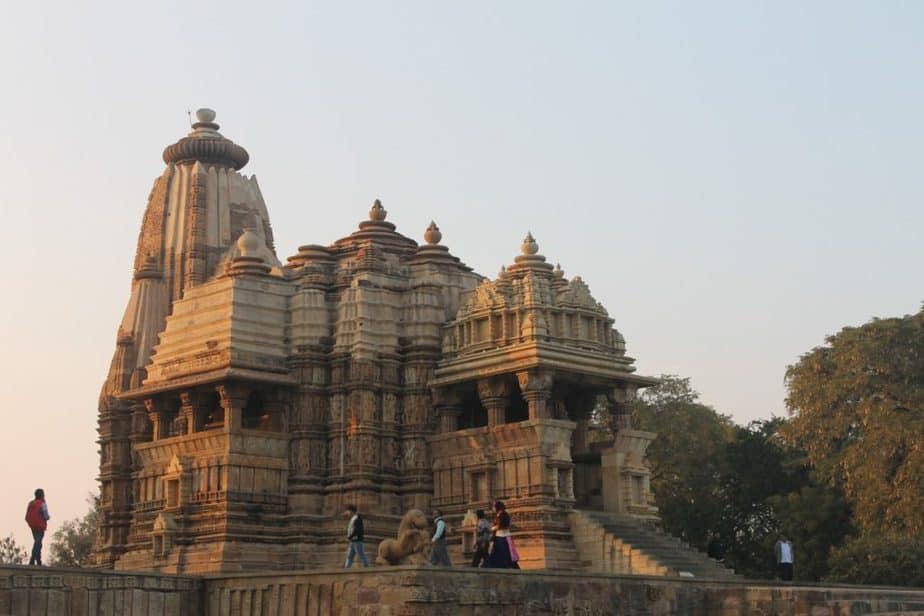
Days: 5-6
Hotel Recommendations:
– Budget: Treebo Trend Shagun, Bhopal
– Mid-range: Syna Heritage Hotel, Khajuraho
– Luxury: Jehan Numa Palace Hotel, Bhopal
Must-See:
– Khajuraho Temples: Renowned for their intricate carvings and architectural brilliance.
– Sanchi Stupa: A UNESCO World Heritage site with Buddhist monuments and edicts.
– Kanha National Park: One of India’s largest national parks, home to a significant population of tigers.
Little-known Attractions:
– Bhimbetka Rock Shelters: Ancient cave paintings that trace back to the prehistoric age.
– Orchha: A historic town known for its palaces and temples, set on the banks of the Betwa River.
Estimated Cost: $40-90 per day (excluding luxury accommodations).
Pro Tip: Explore the local bazaars of Bhopal for Chanderi and Maheshwari fabrics, unique to this region.
In the heart of Madhya Pradesh, I spent a couple days photographing the temples at Khajuraho. My aunt wanted to visit it because it’s on the list of top destinations in the world. And it’s a place you won’t often see in India because the temples have erotic carvings all over them.
Read more: Khajuraho Travel Guide
Chhattisgarh – A Mosaic of Tribal Culture and Natural Beauty
Days: 3-4
Hotel Recommendations:
– Budget: Hotel Simran Pride, Raipur
– Mid-range: Muba’s Machaan, Kanha
– Luxury: The Lal Bagh, Raipur
Must-See:
– Bastar: Home to the indigenous tribes and famous for its Dussehra festival.
– Chitrakote Falls: Often referred to as the ‘Niagara Falls of India’.
– Kawardha Palace: A beautiful heritage hotel, offering a glimpse into the royal past.
Little-known Attractions:
– Bhoramdeo Temple: Known as the ‘Khajuraho of Chhattisgarh’ due to its erotic carvings.
– Sirpur: An ancient town, rich in archaeological sites and ancient temples.
Estimated Cost: $30-70 per day (excluding luxury accommodations).
Pro Tip: Engage with the tribal communities, learn about their customs, and perhaps buy some handcrafted souvenirs. This is a way to support their livelihoods directly.
Ideal 6-Week India Itinerary: Blending Popular & Offbeat Destinations
Week 1: Start with North India
Day 1-3:
– Delhi
– Popular: India Gate, Red Fort, Qutub Minar
– Offbeat: Hauz Khas Village, Champa Gali
Day 4-6:
– Jaipur, Rajasthan
– Popular: Amber Fort, Hawa Mahal, City Palace
– Offbeat: Panna Meena Ka Kund, Bar Palladio
Day 7:
– Agra, Uttar Pradesh
– Popular: Taj Mahal, Agra Fort
– Offbeat: Mehtab Bagh for a unique view of the Taj
Week 2: The North Continues
Day 8-10:
– Varanasi, Uttar Pradesh
– Popular: Ganges River Aarti, Kashi Vishwanath Temple
– Offbeat: Sarnath, local music at Guleria Kothi
Day 11-14:
– Himachal Pradesh
– Popular: Shimla, Manali
– Offbeat: Parvati Valley, Great Himalayan National Park
Week 3: Journey to the West
Day 15-17:
– Mumbai, Maharashtra
– Popular: Marine Drive, Gateway of India
– Offbeat: Global Vipassana Pagoda, Worli Sea Face
Day 18-21:
– Goa
– Popular: Baga Beach, Aguada Fort
– Offbeat: Galgibag Beach, Dudhsagar Falls Trek
Week 4: The Southern Delight
Day 22-24:
– Kochi and Backwaters, Kerala
– Popular: Fort Kochi, Houseboat in Alleppey
– Offbeat: Kumbalangi Integrated Tourism Village
Day 25-28:
– Bangalore, Karnataka
– Popular: Lalbagh Botanical Gardens, Bangalore Palace
– Offbeat: Day trips to Hampi or Mysore
Week 5: Eastern Exploration
Day 29-31:
– Kolkata, West Bengal
– Popular: Victoria Memorial, Howrah Bridge
– Offbeat: Kumartuli, Marble Palace
Day 32-34:
– Darjeeling, West Bengal
– Popular: Tea Gardens, Toy Train Ride
– Offbeat: Peace Pagoda, Observatory Hill
Day 35:
– Bhubaneswar, Odisha
– Popular: Lingaraja Temple, Rajarani Temple
– Offbeat: Dhauli, Bindusagar Lake
Week 6: Concluding in Central India
Day 36-38:
– Khajuraho, Madhya Pradesh
– Popular: Western Group of Temples, Light and Sound Show
– Offbeat: Eastern and Southern Group of Temples
Day 39-42:
– Chhattisgarh
– Popular: Bastar, Chitrakote Falls
– Offbeat: Bhoramdeo Temple, Sirpur
Day 43-45:
– Concluding in Delhi (or your departure city) – Shopping, last-minute sightseeing, or simply relax.
Pro Tip: This itinerary packs in more than 99.9% of people will ever see in India. If you want a more relaxed trip remove 1 destination each week and you’ll have more time to enjoy your favorite spots. Adjust according to your pace. Make sure to have some buffer days to relax, especially if you’re traveling by train or road, as delays can be common.
Itinerary for Budget Travelers: Traveling on a Shoestring
Week 1-2: North India
– Delhi (3 days): Couchsurfing or budget hostels, street food tours, and free historical sights.
– Rishikesh and Haridwar, Uttarakhand (4 days): Stay in ashrams, participate in free yoga classes, and experience the Ganga Aarti.
– Agra, Uttar Pradesh (2 days): Visit the Taj Mahal during sunrise to avoid large crowds. Stay in budget guesthouses.
– Jaipur, Rajasthan (4 days): Explore free forts and take self-guided walking tours.
Week 3-4: West and South India
– Mumbai, Maharashtra (3 days): Use local transport, visit free attractions like the Marine Drive and Juhu Beach.
– Goa (4 days): Stay in backpacker hostels, rent a bike for transportation, and enjoy the less crowded southern beaches.
– Hampi, Karnataka (4 days): Budget homestays, explore ruins on foot or by bicycle.
– Kochi, Kerala (2 days): Affordable guesthouses and free sights in Fort Kochi.
Week 5-6: East and Central India
– Kolkata, West Bengal (3 days): Affordable lodges, street food, and trams for transport.
– Puri and Bhubaneswar, Odisha (3 days): Budget stays, visit the Jagannath Temple and beaches.
– Khajuraho, Madhya Pradesh (3 days): Cheap guesthouses, cycle around the temple complexes.
– Varanasi, Uttar Pradesh (4 days): Budget accommodations near the ghats, witness the ceremonies, and explore on foot.
Itinerary for Midrange Travelers: Comfort without Splurging
Week 1-2: North India
– Delhi (3 days): Boutique hotels, guided city tours, and dine in mid-range restaurants.
– Amritsar, Punjab (2 days): Visit the Golden Temple, stay in comfortable hotels, and experience the Wagah Border ceremony.
– Manali and Shimla, Himachal Pradesh (6 days): Cozy B&Bs, guided treks, and indulge in local cuisine.
Week 3-4: South India
– Bangalore and Mysore, Karnataka (4 days): Stay in 3-star hotels, enjoy city tours and local eateries.
– Ooty, Tamil Nadu (3 days): Heritage hotels, toy train ride, and botanical garden visits.
– Backwaters of Kerala (4 days): Stay in mid-range houseboats, local performances, and Ayurvedic massages.
Week 5-6: West and Central India
– Udaipur and Jodhpur, Rajasthan (5 days): Heritage stays, lake tours, and fort visits.
– Mumbai, Maharashtra (3 days): 3-star hotels, city tours, and cultural experiences.
– Aurangabad, Maharashtra (3 days): Comfortable stays, visit Ajanta and Ellora caves.
Itinerary for Luxury Travelers: A First-Class Experience
Week 1-2: Royal North
– Delhi (3 days): 5-star hotels like The Oberoi, chauffeured tours, and fine dining.
– Agra, Uttar Pradesh (2 days): Stay at the Oberoi Amarvilas, private Taj Mahal tour.
– Jaipur, Rajasthan (5 days): Stay at Rambagh Palace, private fort tours, and exclusive culinary experiences.
Week 3-4: Serene South
– Kochi and Kumarakom, Kerala (4 days): Luxury resorts, private houseboat cruises, and personalized Ayurvedic treatments.
– Hyderabad, Telangana (3 days): Stay at the Taj Falaknuma Palace, private city tours, and fine dining.
– Mahabalipuram and Pondicherry, Tamil Nadu (4 days): Beachfront resorts, exclusive temple tours, and French-inspired dining.
Week 5-6: Grand West and Central
– Udaipur, Rajasthan (4 days): Stay at The Leela Palace, private boat tours, and curated dining experiences.
– Mumbai, Maharashtra (4 days): The Taj Mahal Palace stay, yacht rides, and theatre shows.
– Goa (3 days): Luxury beach resorts, private beach dinners, and spa treatments.
For all categories, remember to have some buffer days for relaxation, and to adjust destinations according to personal preferences.
FAQs: 6 Weeks in India
Is 6 weeks enough to cover all of India?
While 6 weeks is a generous amount of time, India is a vast country with diverse landscapes, cultures, and experiences. You’ll be able to cover many major and even some offbeat destinations, but it won’t be exhaustive. It’s best to prioritize based on interests.
What is the best time of year to spend 6 weeks in India?
India can be visited year-round, but the most favorable time for most regions is from October to March, when the weather is cooler and more comfortable.
How should I budget for 6 weeks in India?
Your budget largely depends on your travel style. India caters to all budgets, from shoestring backpackers to luxury travelers. Researching ahead and setting a daily allowance can help manage expenses.
Is it safe to travel for an extended period in India?
Yes, many travelers spend months exploring India. It’s essential, however, to take standard precautions, stay informed about local customs, and be aware of the areas you’re traveling to.
Do I need a special visa for a 6-week stay in India?
Most travelers will need a tourist visa. The duration and type can vary based on your nationality. It’s crucial to check with the Indian embassy or consulate in your country for specific visa requirements.
Can I travel around India using public transportation for 6 weeks?
Absolutely! India has an extensive railway and bus network. There are also budget airlines for longer distances. Public transport is an affordable and authentic way to experience the country.
What should I pack for 6 weeks in India?
Pack light, breathable clothing, a good pair of walking shoes, essential medications, and travel essentials. It’s also recommended to carry a universal adapter, as power sockets can vary.
Is it easy to find accommodation during my 6-week trip?
Yes, India offers a plethora of accommodation options, from hostels and guesthouses to luxury resorts. However, it’s wise to book in advance during peak tourist seasons or while visiting popular destinations.
Will I face a language barrier during my 6 weeks in India?
While India is multilingual, English is widely spoken in tourist areas, hotels, and among the younger population. Knowing a few basic local words can enhance your travel experience, but it’s not mandatory.
What kind of food precautions should I take during my trip?
Stick to reputable restaurants or eateries, avoid street food if you have a sensitive stomach, and always drink bottled water. Remember, Indian cuisine can be spicy for some, so indicate your spice preference when ordering.
Embarking on a 6-week journey in India is an exciting adventure. Being prepared and informed can ensure that the experience is seamless and memorable. Safe travels!
Final Thoughts
Traveling for 6 weeks in India can be the trip of your lifetime. I know that my time going from Indian big cities to villages to temples to chill beach bars has been life-changing.
From the towering Himalayas in the north to the serene backwaters in the south, from the bustling bazaars of the west to the untouched beauty of the east, there’s so much to unpack.
But with the right planning and a curated itinerary, whether you’re on a budget, seeking mid-range comfort, or indulging in luxury, your 6 weeks in India can transform into an unforgettable journey.
Every traveler will find something to resonate with, making every moment, every sight, and every interaction a cherished memory.
Dive deep into the soul of India, embrace its diversity, and let your 6 weeks in India be a voyage of discovery and self-enlightenment.
Safe travels!

